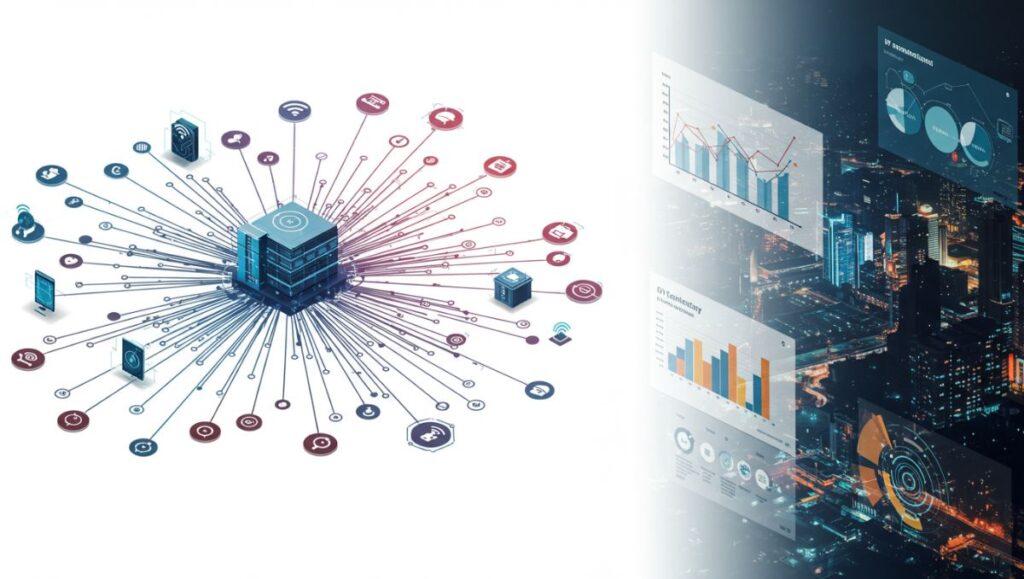The word “Telemetryczny” comes from the Polish term telemetria, meaning telemetry — a process of collecting, transmitting, and analyzing data remotely from sensors and devices. In simple terms, a telemetryczny system is any system that gathers measurements from a distance and sends them to a central location for monitoring or analysis.
Today, telemetry plays a vital role in everything from medical care and automotive systems to space missions, energy grids, and industrial automation. The adjective telemetryczny describes technologies, tools, or processes based on real-time remote data acquisition — a key foundation of the modern Internet of Things (IoT).
The Concept of Telemetry: From Space to Smartphones
Definition
Telemetry (or system telemetryczny) is the science and technology of measuring physical variables and transmitting those measurements electronically to a distant location. These variables can include temperature, pressure, heart rate, voltage, or even satellite position.
The “telemetryczny” aspect means the process is automatic and remote — data flows continuously without human intervention, using wireless, satellite, or internet-based connections.
Etymology
The word originates from Greek:
-
“tele” – distant
-
“metron” – measure
Thus, telemetry literally means “measuring at a distance.”
How Telemetry Works
A telemetryczny system typically includes several components that work together to collect, send, and analyze data.
1. Sensors
These devices capture raw physical data — for example:
-
Temperature sensors
-
ECG electrodes
-
Speed or pressure sensors
-
Vibration detectors
2. Transmitters
Sensors are connected to transmitters, which encode and send the data through a communication channel such as:
-
Radio waves
-
Satellite links
-
Cellular networks
-
Internet (Wi-Fi or Ethernet)
3. Communication Channel
This is the medium that delivers telemetry data from the remote site to the monitoring center. In modern telemetryczny systems, this is often an IoT-based cloud network.
4. Receiver and Processing Unit
The receiver collects the data, decodes it, and processes it using software or cloud-based analytics.
5. Visualization and Control Interface
Finally, the data is displayed in dashboards, graphs, or alerts — allowing users to make real-time decisions or trigger automatic responses.
Telemetryczny in Different Industries
1. Telemetryczny in Healthcare
In medicine, telemetry is revolutionizing patient care. Telemetryczny systems monitor patients’ vital signs remotely, allowing doctors to track conditions in real time.
Examples:
-
Cardiac telemetry: Heart rate and ECG signals transmitted to hospital servers.
-
Remote patient monitoring (RPM): Chronic disease patients can be observed at home.
-
Wearable devices: Smartwatches and medical wearables continuously transmit health data.
This approach reduces hospital stays, enables early detection of health issues, and supports telemedicine.
2. Telemetryczny in Automotive Systems
Modern cars are packed with telemetry-based systems that collect and transmit performance data.
Applications:
-
Vehicle diagnostics: Sensors report engine performance, fuel efficiency, and error codes.
-
Fleet management: GPS and telemetry data track vehicle locations and driver behavior.
-
Motorsport telemetry: Racing teams use telemetryczny systems to analyze car performance during races.
The result is improved safety, efficiency, and predictive maintenance.
3. Telemetryczny in Industrial Automation
Industrial telemetry systems are essential for Industry 4.0 — the era of smart factories and connected devices.
Functions:
-
Monitoring machinery performance and energy use
-
Detecting equipment failures in real time
-
Managing supply chains and logistics remotely
With IoT integration, telemetryczny solutions enable predictive maintenance and reduce downtime.
4. Telemetryczny in Energy and Utilities
Energy providers rely heavily on telemetry to control infrastructure and ensure reliability.
Examples:
-
Electric power grids: Telemetry monitors voltage, current, and frequency.
-
Water and gas utilities: Remote sensors detect leaks and consumption levels.
-
Renewable energy plants: Solar and wind farms use telemetry to optimize production.
These telemetryczny systems help achieve energy efficiency and environmental sustainability.
5. Telemetryczny in Space and Aerospace
Telemetry was originally developed for space exploration and remains critical to this day.
Examples:
-
Satellites transmit telemetry data on orbit, speed, and temperature.
-
Spacecraft send telemetry to mission control centers on Earth.
-
Aircraft use telemetry to track altitude, fuel, and engine performance.
Without telemetry, remote control of space probes or rockets would be impossible.
Benefits of Telemetryczny Systems
-
Real-Time Monitoring – Access to live data allows quick decision-making.
-
Automation – Reduces the need for manual measurement and supervision.
-
Predictive Maintenance – Early detection of anomalies prevents equipment failure.
-
Cost Efficiency – Remote monitoring reduces travel and labor costs.
-
Safety and Reliability – Continuous data transmission improves operational security.
-
Data-Driven Insights – Enables analytics and optimization based on real-time feedback.
Challenges and Risks of Telemetryczny Technology
While telemetry brings major advantages, it also poses several challenges:
1. Data Security
Telemetry systems transmit sensitive information — from medical records to industrial data — which can be vulnerable to hacking if not properly encrypted.
2. Connectivity Dependence
A stable network connection is essential; loss of signal can interrupt data transmission or delay critical alerts.
3. System Integration
Integrating telemetry devices with legacy systems can be technically complex.
4. Data Overload
Large volumes of telemetry data require powerful storage and analytics infrastructure.
5. Regulatory Compliance
In healthcare and critical infrastructure, telemetryczny systems must meet strict compliance standards such as HIPAA or ISO/IEC 27001.
Telemetryczny and the Internet of Things (IoT)
The rise of IoT has expanded telemetry to new frontiers. Every connected device — from a smart thermostat to a factory robot — uses telemetry to send data to cloud platforms.
IoT transforms traditional telemetry into interactive ecosystems where data doesn’t just flow one way (from device to system), but also back again — enabling remote control, updates, and automation.
For example:
-
Smart homes adjust lighting and heating automatically based on telemetry data.
-
Smart cities use telemetry for traffic management and pollution monitoring.
-
Industrial IoT uses telemetry to coordinate robots and sensors in real time.
Thus, telemetryczny systems form the nervous system of the IoT world.
Telemetryczny in Software and IT Systems
In software engineering, telemetry refers to application performance monitoring (APM) — where software automatically collects usage data and errors.
Applications:
-
Cloud platforms (like AWS or Azure) use telemetry to track service performance.
-
Game development uses telemetry to analyze player behavior.
-
Cybersecurity tools rely on telemetry to detect anomalies and breaches.
Telemetryczny software solutions thus help companies maintain uptime, improve user experience, and ensure compliance.
Modern Trends in Telemetryczny Systems
1. Edge Computing
Instead of sending all data to the cloud, telemetry systems now use edge processing — analyzing data locally on the device for faster response times.
2. AI and Machine Learning
Artificial intelligence enhances telemetry by predicting failures or optimizing resource allocation based on patterns in historical data.
3. Cloud-Based Telemetry Platforms
Centralized cloud platforms provide scalable infrastructure for managing billions of telemetry data points.
4. Blockchain Integration
Blockchain ensures data integrity and transparency in telemetry transmissions — especially important in industrial and energy sectors.
5. 5G Networks
5G technology provides the low latency and high bandwidth required for next-generation telemetry applications such as autonomous vehicles and smart grids.
The Future of Telemetryczny Technology
The future of telemetry is moving toward self-managing, intelligent systems that not only collect data but also learn, adapt, and respond automatically.
We can expect:
-
Fully autonomous industrial monitoring using AI telemetry.
-
Real-time global health monitoring networks.
-
Interconnected infrastructure telemetry for smart cities and transportation systems.
As telemetryczny technology advances, it will continue to blur the boundaries between the physical and digital worlds, enabling unprecedented control, efficiency, and intelligence.
Conclusion
The telemetryczny revolution represents a cornerstone of modern digital transformation. From monitoring astronauts in orbit to tracking heartbeats at home, telemetry allows humanity to measure, analyze, and understand the world in real time.
By combining data collection, wireless communication, and analytics, telemetryczny systems empower industries to become smarter, safer, and more efficient.
As we enter a fully connected era powered by IoT, AI, and automation, telemetry will remain the invisible force that drives innovation and decision-making across every field.





